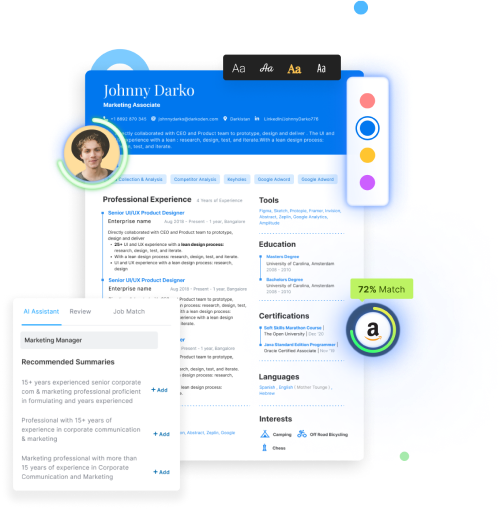Waiting for a response after a job interview can feel like torture.
If you’ve refreshed your inbox a hundred times and still heard nothing, you’re not alone.
According to a study, 75% of job seekers never receive post-interview feedback -making the process even more frustrating.
While some signs of rejection are obvious, like receiving a generic rejection email, others are more subtle.
Here are 5 overlooked indicators that you didn’t get the job - and what to do differently next time to improve your chances.
1. The Interview Felt Like an Interrogation (Not a Conversation)
Did your interview feel like a rapid-fire Q&A session rather than a natural discussion?
Great interviews feel like conversations and most interviewers take time to sell you on the company or ask about your long-term career goals.
If the interviewer was just checking off a list of questions and didn’t engage in meaningful dialogue, it's a red flag.
What to Do Next:
- Reflect on your approach - were you too passive? Engaging interviewers with thoughtful questions can change the dynamic.
- Before your next interview, research the company’s pain points and tailor your responses to how you can help solve them.
Pro Tip: Use the “reverse interview” method. Ask “What are the biggest challenges the team is currently facing?”. This shifts the conversation and helps you stand out.
Also Read: What are some signs that you got the job after an interview?
2. You Weren’t Asked About Your Availability or Salary
When companies are serious about a candidate, they’ll typically ask questions about availability, salary expectations, and potential start dates.
If these topics never came up, that might be a warning sign.
What to Do Next:
- If the interviewer doesn’t bring it up, don’t hesitate to ask: “Can you share what the next steps in the process will be?” This helps gauge their level of interest.
- Pay attention to their response. If they’re vague or noncommittal, they may not be moving forward with you.
Pro Tip: If salary was never mentioned, but you get invited for another interview, be ready to initiate the conversation confidently.

3. Your Follow-Up Email Went Unanswered
You sent a thank-you email, but days (or even weeks) passed with no response. Silence after an interview is often a clear rejection.
Even if the hiring teams are busy, they’ll usually acknowledge your follow-up.
If they’ve completely ignored your email, it could mean they’ve moved on or are waiting on their top choice before rejecting other candidates.
What to Do Next:
- If you haven’t heard back within a week, send a short follow-up: “Just checking in - has there been any update on the hiring process?”
- If there’s still no response, move on. Ghosting is unprofessional, but it happens. Use this as an opportunity to refine your approach.
Also Read: How to get feedback after an interview?
4. The Job Gets Reposted or You See New Hiring Activity
If you notice the job listing pop up again or see the company posting about hiring for similar roles, it’s a major sign that they’ve decided to keep looking.
Sometimes companies restart the hiring process when they don’t find the right fit.
If the role was reposted shortly after your interview, they likely weren’t satisfied with the candidates they met.
What to Do Next:
- Don’t take it personally! Sometimes hiring needs change, or companies realize they need a different skill set.
- If you still want to work there, apply again - but tweak your approach. Update your resume and refine your interview strategy.
Also Read: How to prepare better for behavioral interviews with AI?
5. You Were Given the “Keep in Touch” Response
If you got a response like “We’ll keep your resume on file” or “We really liked you, but…”, that’s often a polite rejection.
When hiring managers genuinely want to keep in touch, they’ll be specific about future opportunities.
Vague responses usually mean you weren’t selected but they don’t want to burn bridges.
What to Do Next:
- If they liked you but went with another candidate, ask for feedback: “Is there anything I could improve for future roles?”
- Connect with your interviewer on LinkedIn and stay engaged with their content.
- Keep applying elsewhere and don’t dwell on rejection - it’s part of the process!
Also Read: How to send a follow up email after an interview?
Final Thoughts: Use Every Interview to Get Better
Getting rejected after an interview sucks, but every interview is a chance to improve.
Instead of seeing rejection as failure, use it as fuel to refine your approach. Whether it’s tailoring your resume or practicing mock interviews, Hiration’s AI-driven tools can help you land your next job faster.
The right job is out there - you just need the right strategy to land it!



